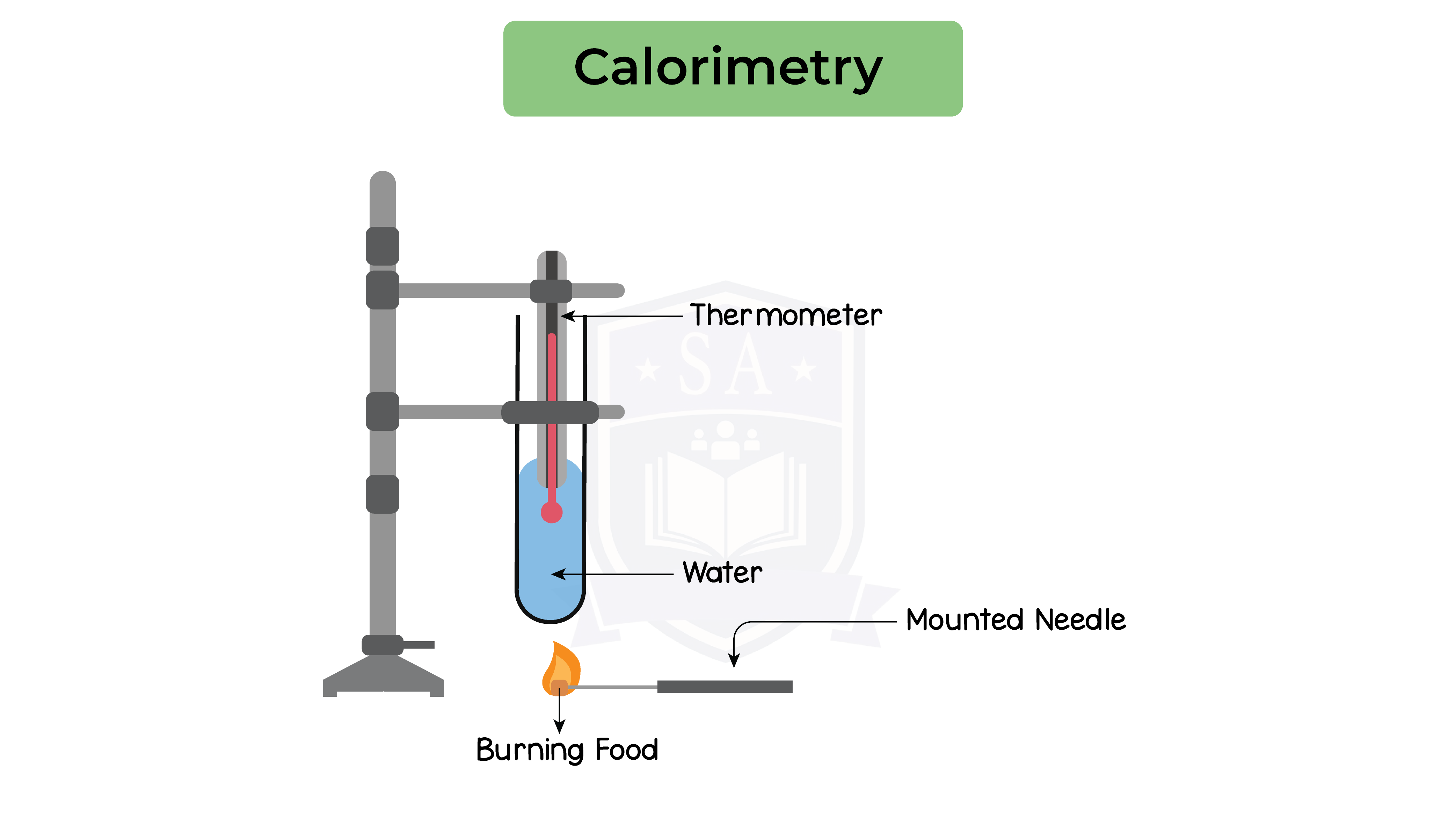REVISION NOTES
IGCSE Edexcel Biology
2.6 Nutrition (in Human)
2.6.1 Understand that a balanced diet should include appropriate proportions of carbohydrate, protein, lipid, vitamins, minerals, water and dietary fibre
Balanced diet
- The necessary food groups are:
- Carbohydrates
- Proteins
- Lipids
- Vitamins
- Minerals
- Dietary fibre
- Water
2.6.2 Identify the sources and describe the functions of carbohydrate, protein, lipid (fats and oils), vitamins A, C and D, the mineral ions calcium and iron, water and dietary fibre as components of the diet
2.6.3 Understand how energy requirements vary with activity levels, age and pregnancy
2.6.4 Describe the structure and function of the human alimentary canal, including the mouth, oesophagus, stomach, small intestine (duodenum and ileum), large intestine (colon and rectum) and pancreas
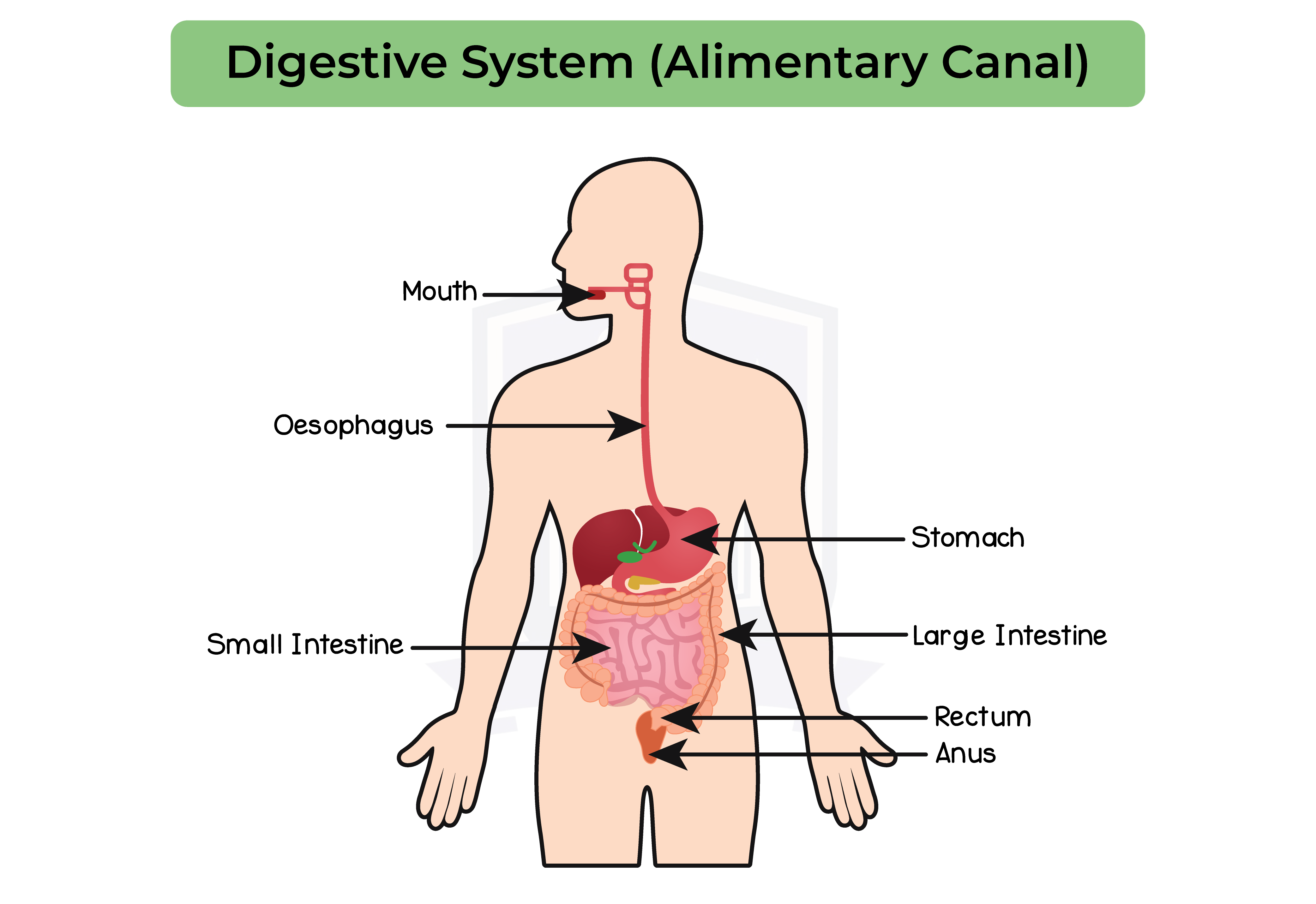

2.6.5 Understand how food is moved through the gut by peristalsis
Peristalsis
- Helps move food along the alimentary canal (gut)
- Muscles in the oesophagus walls create waves of contractions
- Forces the bolus along
- Bolus is churned into chyme in the stomach
- And it continues on to the small intestine
- Controlled by circular and longitudinal muscles
- Circular muscles contract
- Reduce the diameter of the lumen
- Longitudinal muscles contract
- Reduce the length of that section
- Mucus lubricates the food mass and reduces friction
- Dietary fibre provides the roughage
- Required for the muscles to push against during peristalsis
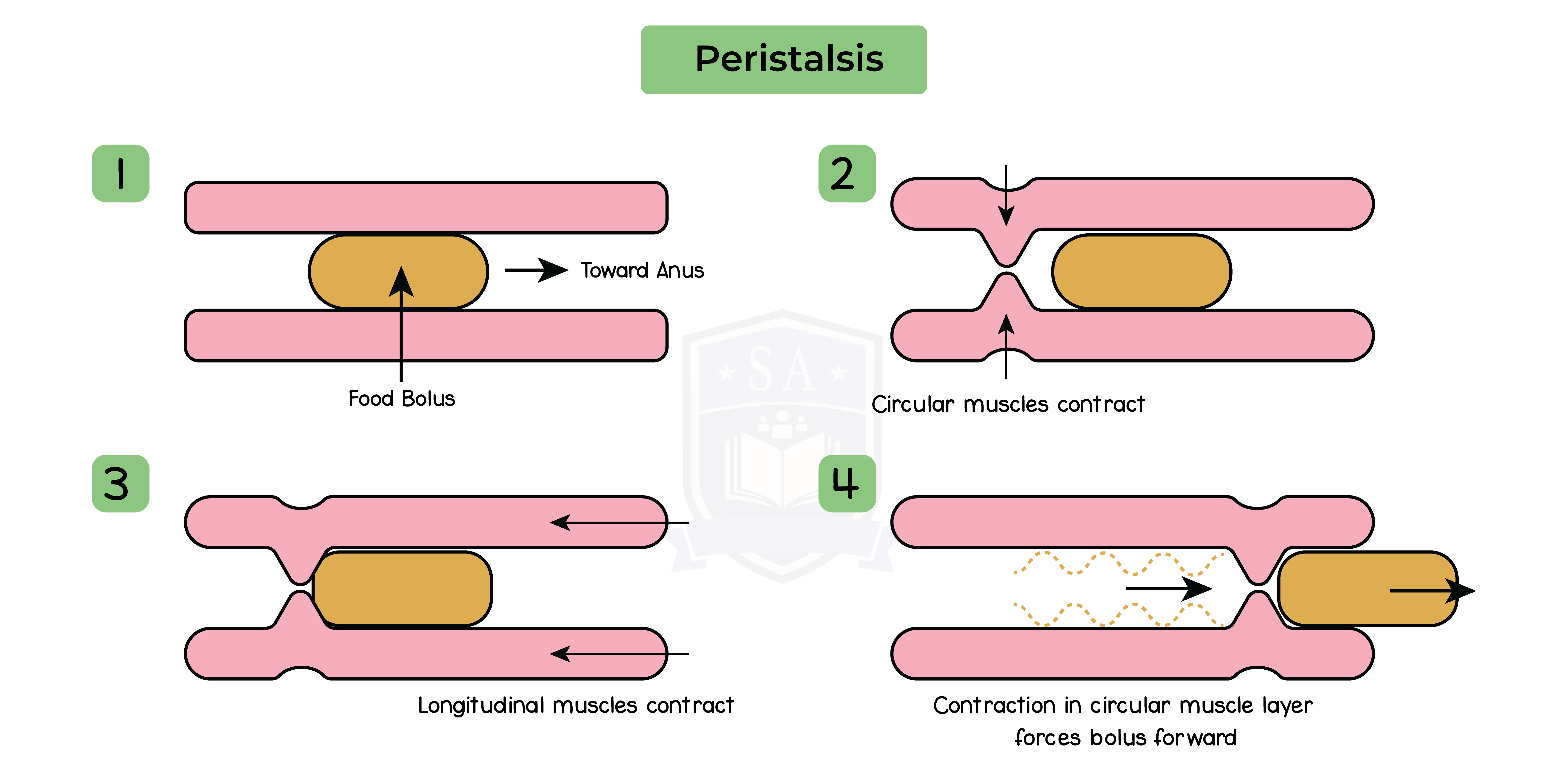
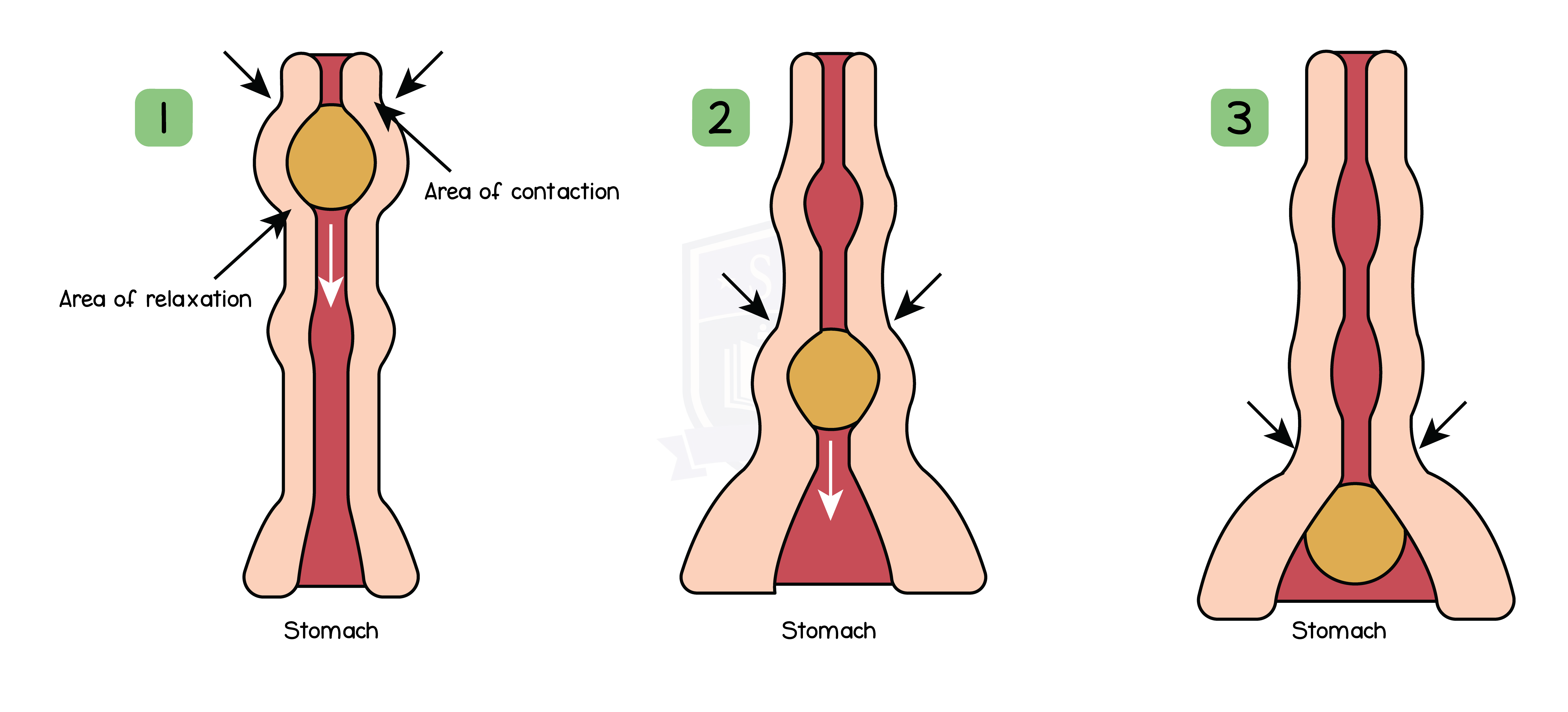
2.6.6 Understand the role of digestive enzymes, including the digestion of starch to glucose by amylase and maltase, the digestion of proteins to amino acids by proteases and the digestion of lipids to fatty acids and glycerol by lipases
Carbohydrases:
- Breakdown carbohydrate to simple sugars
- Amylase
- Made in salivary glands, pancreas and small intestine
- Break down starch into maltose
- Maltase
- Made in small intestine
- Break down maltose into glucose
Proteases:
- Breakdown protein into amino acids
- Pepsin & Trypsin
- Made in stomach and pancreas
- Breakdown proteins into small polypeptide chains
- Other proteases such as peptidases
- Made in small intestine
- Breakdown peptides into amino acids
Lipases:
- Made in pancreas
- Breakdown lipids into glycerol and fatty acids



2.6.7 Understand that bile is produced by the liver and stored in the gall bladder
- Alkaline substance
- Produced in the liver
- Stored in gallbladder
- Released into the small intestine
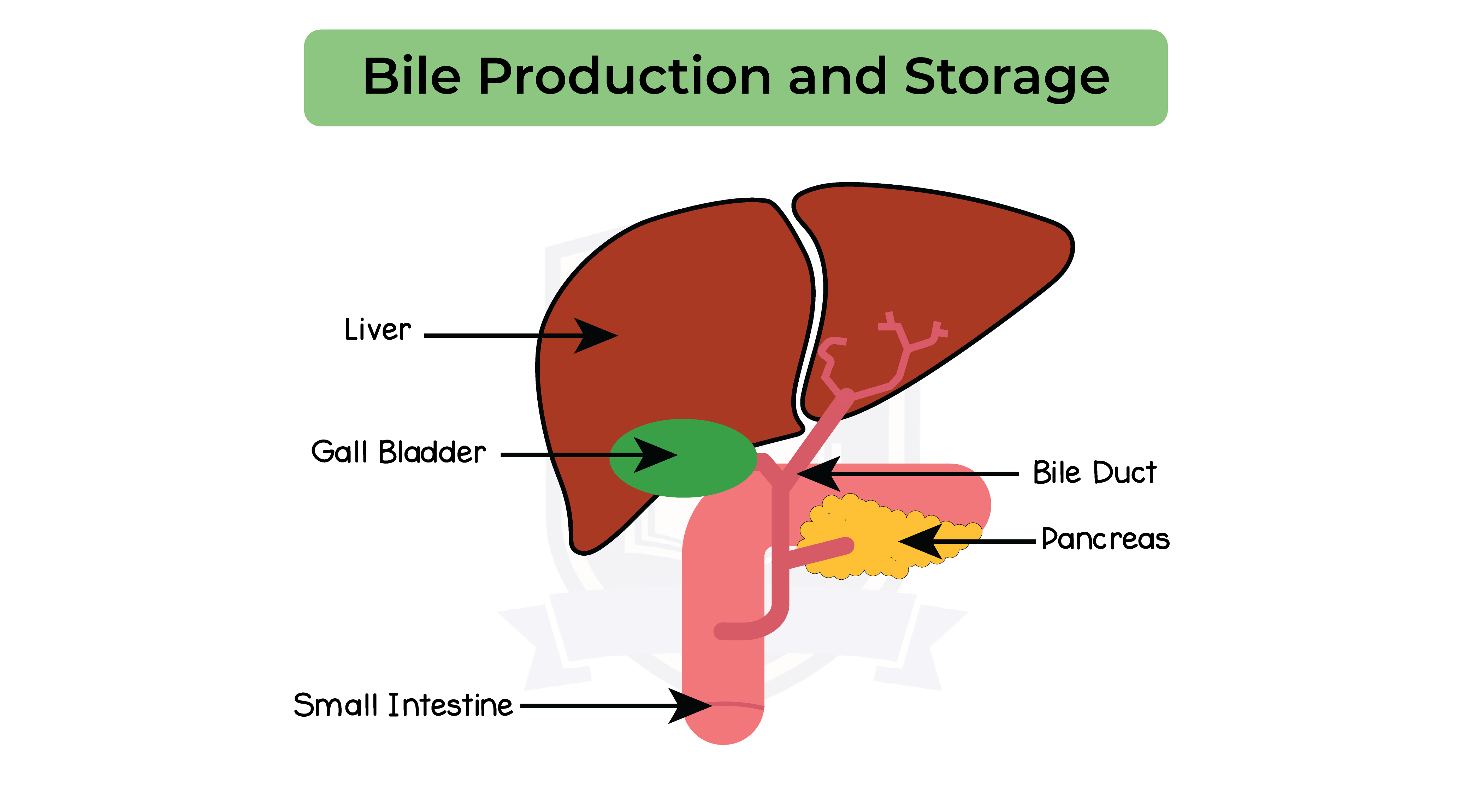
2.6.8 Understand the role of bile in neutralising stomach acid and emulsifying lipids
Role of bile
- Neutralise hydrochloric acid (stomach acid)
- Bile is alkaline
- Reacts with and neutralise acids
- Neutralisation is necessary:
- Enzymes in the small intestine have a higher optimum pH
- Emulsifying lipids
- Breaks large drops of fat into smaller drops
- Increase the surface area of fats
- Increases rate of digestion
- Chemical break down
2.6.9 Understand how the small intestine is adapted for absorption, including the structure of a villus
Absorption:
- Movement of small digested food molecules
- From digestive system to blood and lymph
Adaptations of small intestines:
- Very long
- Highly folded surface with millions of villi
- Increased surface area
Structure of villi:
- Large surface area
- Microvilli increase the surface area
- Short diffusion distance
- Wall of a villus is one cell thick
- Steep concentration gradient
- Network of blood capillaries take glucose and amino acids away from small intestine
- A lacteal transports fatty acids and glycerol away from the small intestine i
- Concentration gradient is maintained
- Small molecules transported at a rapid rate

2.6.10B Practical: investigate the energy content in a food sample
Method:
- Add 25cm3 of water into a boiling tube
- Record the starting temperature of the water
- Weigh the initial mass of the food sample
- Set fire to the sample of food using the bunsen burner
- Hold the sample 1cm from the boiling tube until it has completely burned
- Record the final temperature of the water
- (Once cooled) weigh the mass of any remaining food sample and record
- Repeat the process with different food samples
- e.g. popcorn, nuts, crisps
Results
- A larger increase in water temperature indicates a larger amount of energy contained by the sample
- We can calculate the energy in each food sample using the following equation:
Energy transferred (J) =
(mass of water (g) x 4.2 x temperature increase (°C)) ÷ (mass of food (g))
